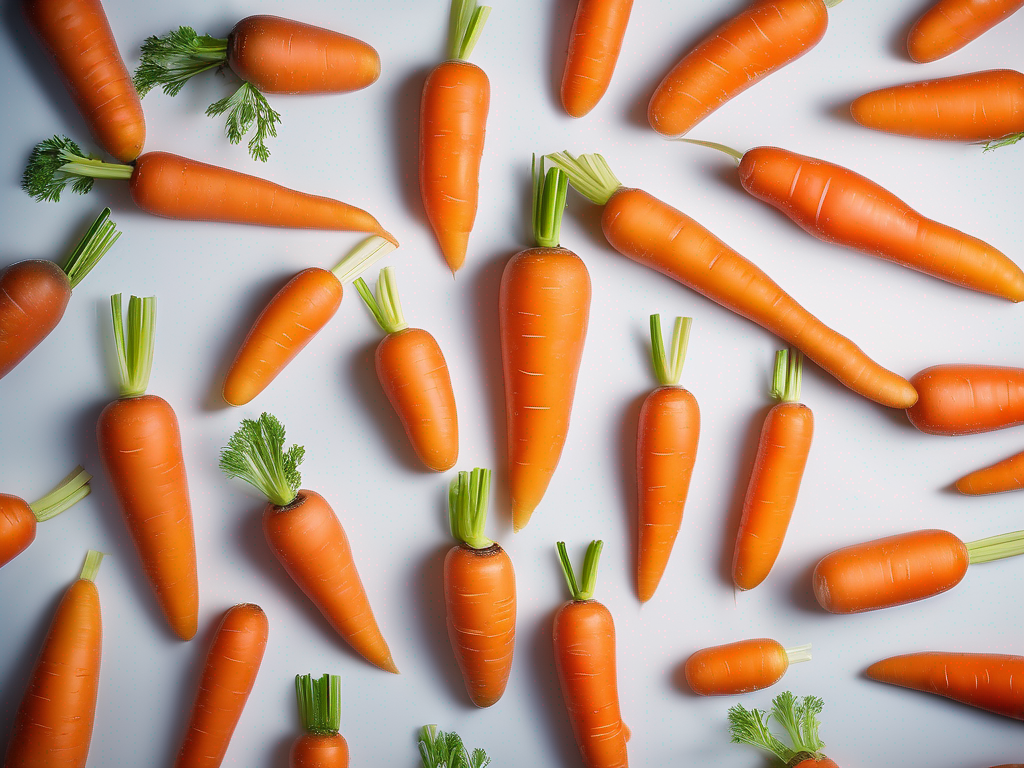
How to Preserve Carrots for an Extended Period of Time
Get Your Free Food Safety Cheat Sheet
30 most common foods with instant answers. Print it and stick it on your fridge—completely free!
How to Preserve Carrots for an Extended Period of Time
Carrots are versatile and nutritious root vegetables that can be enjoyed in various dishes, from salads to soups to snacks. To ensure that your carrots stay fresh and flavorful for an extended period of time, proper preservation techniques are essential. In this comprehensive guide, we will explore various methods to help you store carrots effectively, so you can enjoy their goodness for longer. (Carrots)
Understanding the Importance of Proper Carrot Storage
Carrots are rich in essential nutrients such as beta carotene, fiber, and vitamins, making them a valuable addition to a healthy diet. However, improper storage can lead to spoilage, loss of nutrients, and potential food safety risks. By following the right preservation methods, you can maintain the quality and freshness of your carrots while minimizing waste.
Factors Affecting Carrot Shelf Life
Several factors can influence the shelf life of carrots, including:
- Temperature: Carrots should be stored at the proper temperature to prevent spoilage.
- Humidity: Carrots require a specific level of humidity to stay crisp and fresh.
- Light exposure: Carrots can become bitter when exposed to light for extended periods.
- Air circulation: Proper ventilation is crucial to prevent mold growth.
Best Practices for Preserving Carrots
1. Choosing Fresh Carrots
- Select firm, smooth carrots without any signs of mold or soft spots.
- Opt for carrots with vibrant orange color, indicating freshness.
2. Cleaning and Preparing Carrots
- Rinse carrots under cold water to remove dirt and debris.
- Trim off the green tops, leaving a small portion attached to maintain freshness.
- Peel the carrots if desired, although it is not necessary for storage.
3. Storage Methods for Carrots
A. Refrigeration
- Place unwashed carrots in a perforated plastic bag in the vegetable crisper drawer.
- Ensure proper air circulation to prevent moisture buildup.
- Carrots can last up to 2-3 weeks in the refrigerator when stored correctly.
B. Root Cellar or Cool Basement
- Store unwashed carrots in a cool, dark place with adequate humidity.
- Layer carrots in damp sand or sawdust to maintain freshness.
- Check regularly for any signs of spoilage and remove affected carrots.
C. Freezing
- Blanch peeled and sliced carrots in boiling water for a few minutes.
- Plunge carrots into ice water to stop the cooking process.
- Pack blanched carrots in airtight containers or freezer bags and label with the date.
- Frozen carrots can last up to 10-12 months and are ideal for soups and stews.
4. Tips for Extending Carrot Shelf Life
- Avoid washing carrots before storage to prevent mold growth.
- Check stored carrots regularly for any signs of sprouting or decay.
- Rotate carrots in storage to use older ones first and maintain freshness.
- Consider pickling or canning carrots for long-term preservation.
Conclusion
Preserving carrots for an extended period of time involves proper storage techniques and attention to detail. By following the guidelines outlined in this guide, you can enjoy fresh and flavorful carrots in your meals while reducing food waste. Remember to choose high-quality carrots, clean them properly, and select the most suitable storage method based on your preferences and available resources. With the right approach, you can savor the goodness of carrots for an extended period, adding a healthy touch to your culinary creations. (Carrots)
Authoritative Food Safety References
These agencies and university labs inform every tip and health precaution we publish.
USDA FoodKeeper – Cold Storage Guidelines
Official refrigerator, freezer, and pantry timelines maintained by the U.S. Department of Agriculture.
Visit USDA FoodKeeperFDA Produce Safety Rule & Grower Guidance
Field-to-fridge handling practices that prevent contamination of fruits, vegetables, and leafy greens.
Visit FDA Produce SafetyCDC Foodborne Illness Prevention Hub
Surveillance-backed guidance on pathogens, symptoms, and steps to reduce foodborne illness risk.
Visit CDC Food SafetyUC Davis Postharvest Technology Center
University research detailing optimal storage atmospheres for produce after harvest.
Visit UC Davis PostharvestPenn State Extension – Home Food Preservation & Safety
Peer-reviewed extension bulletins on safe canning, chilling, and reheating practices.
Visit Penn State ExtensionGet Your Free Food Safety Cheat Sheet
30 most common foods with instant answers. Print it and stick it on your fridge—completely free! Want more? Upgrade to the complete guide with 70+ foods.
Scan your food directly and get instant safety info using our AI-powered camera feature.